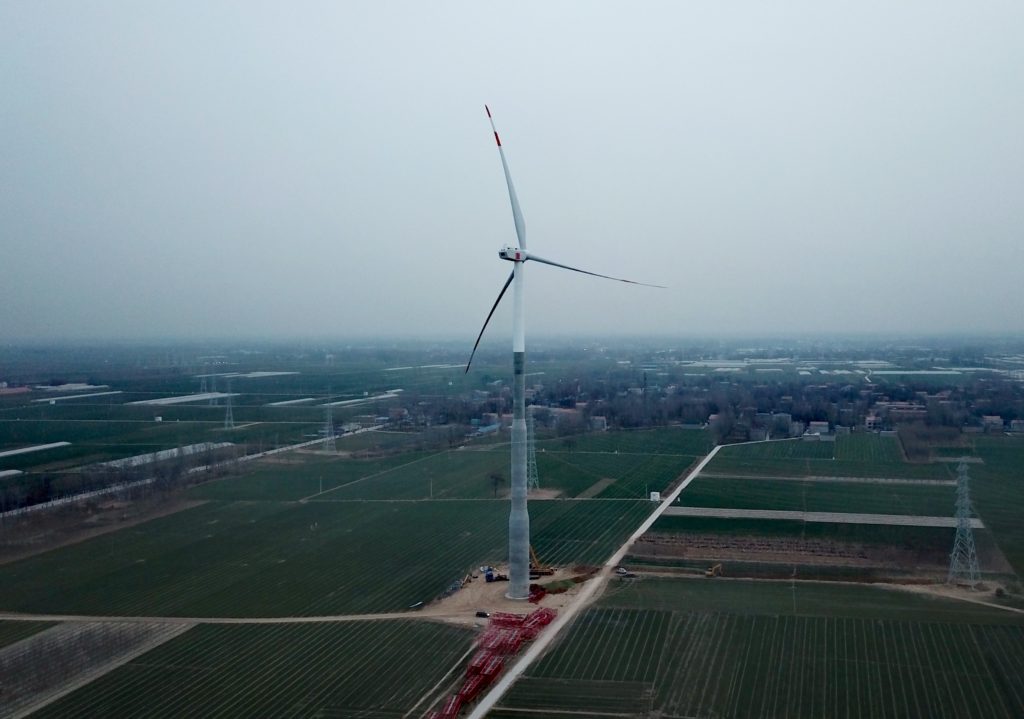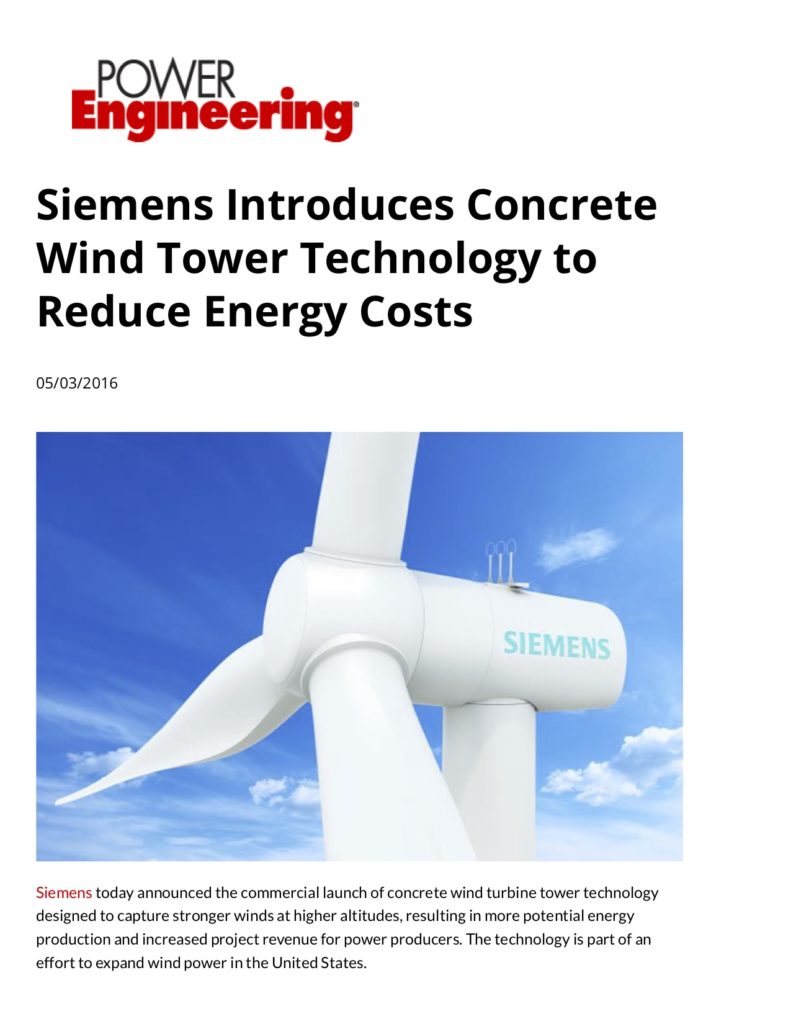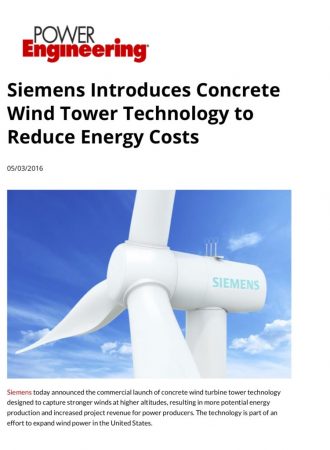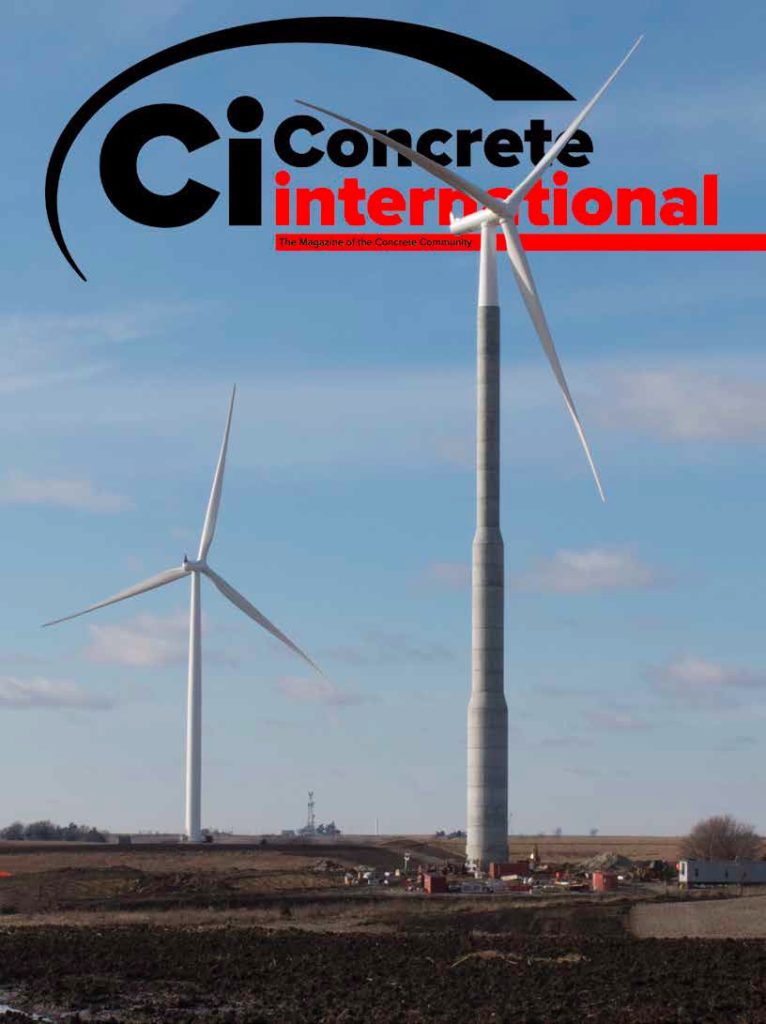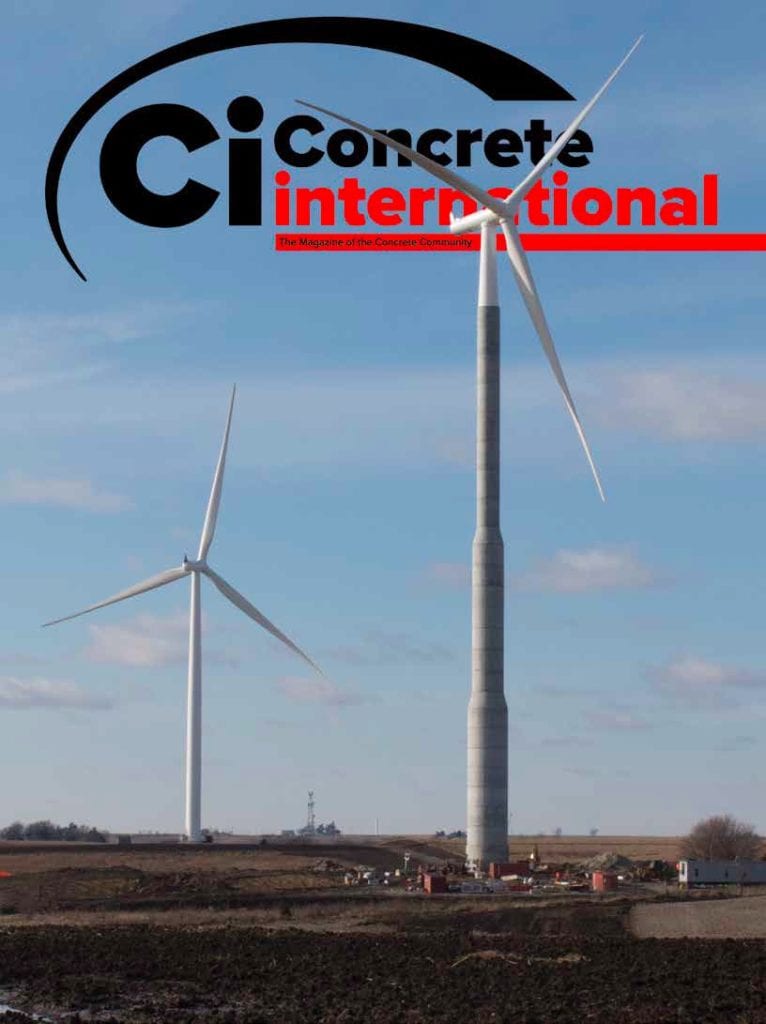Wind Turbines Going higher Thanks to Advanced Concrete Technology
The vast majority of wind turbines we see in the United States are supported by steel towers, with hub heights (the elevation of the rotor axis) which typically do not exceed 90 m. The main reason for the height limitation is that the base of the steel tower cannot exceed 4.5m in diameter due to transportation limitations. Higher towers produce bigger moments at the base and demand larger base diameters. Alternatively, one can increase the wall thickness, but this is not very effective. Solutions do exist, where the steel towers are constructed segmentally both in the transverse and longitudinal directions. They are not very popular because of the added effort of putting them together on the field, their added sensitivity to fatigue, and their low stiffness. Nevertheless, they do exist. [Read More]
The vast majority of wind turbines we see in the United States are supported by steel towers, with hub heights (the elevation of the rotor axis) which typically do not exceed 90m.
The main reason for the height limitation is that the base of the steel tower cannot exceed 4.5m in diameter due to transportation limitations. Higher towers produce bigger moments at the base and demand larger base diameters. Alternatively, one can increase the wall thickness, but this is not very effective. Solutions do exist, where the steel towers are constructed segmentally both in the transverse and longitudinal directions. They are not very popular because of the added effort of putting them together on the field, their added sensitivity to fatigue, and their low stiffness. Nevertheless, they do exist. [Read More]

